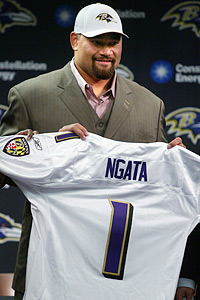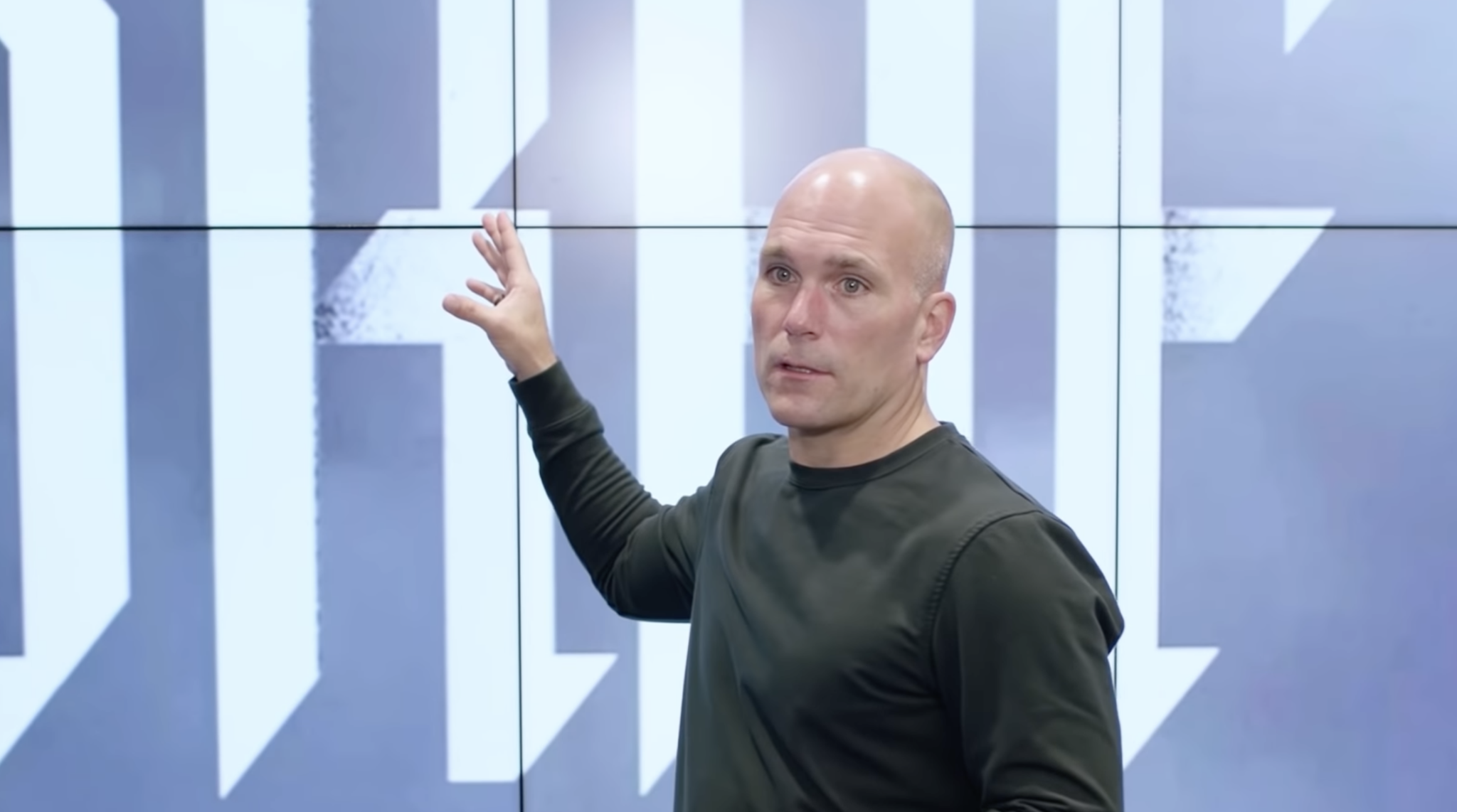If you’ve been wearing out your Greg Mattison dartboard over the last several weeks, you’re probably not alone.
After all, the current Ravens defensive coordinator is solely responsible for the fall of a once-dominant unit all the way to 10th in the NFL, right?
(As an aside, how spoiled are we to be frustrated with a unit still better — statistically — than 22 other defenses in the league?)
From eliminating the submissive three-man rush to playing tighter, press coverage in the secondary, Marvin Lewis, Mike Nolan, or Rex Ryan would be coaching this defense to the elite level it enjoyed over the last decade instead of the mortal status it currently holds.
If only it were that simple.
Placing blame on a few individuals is common practice (Mattison, maligned cornerback Fabian Washington, and, until recently, “overrated” linebacker Terrell Suggs are popular targets these days), but the defensive problems run far deeper.
Personnel issues, aging stars, a key injury (anyone remember Domonique Foxworth?), and — perhaps — coaching shortcomings have left the Ravens with an above-average defense pursuing ghosts of dominance on the M&T Bank Stadium turf.
Truth be told, the current deterioration of the Baltimore defense began years ago, even while the unit was enjoying perennial elite status.
Anyone who’s followed Ozzie Newsome’s 15 years in Baltimore knows organizational success begins and ends in April. Shrewd trades and a sprinkling of free-agent signings have contributed over the years, but the Ravens have traditionally made their money with the NFL Draft, especially on the defensive side of the football.

(Photo courtesy of ESPN.com)
And herein lies the problem with the current defense.
Since the Ravens drafted Suggs with the 10th overall pick in the 2003 draft, Newsome has used only one first-round pick on a defensive player, tackle Haloti Ngata in 2006.
By no means is that an indictment of Newsome, director of player personnel Eric DeCosta, and the scouting department in Owings Mills. The Ravens had no choice but to address the offensive side of the football in hopes of reaching the pinnacle of the NFL.
If defense alone truly wins championships, the Ravens would have a showcase full of Vince Lombardi Trophies in the lobby at 1 Winning Drive, but Baltimore has fallen short with a number of elite defenses, all because of offensive units that couldn’t get out of their own way.
As a result, the team has used five of its last six first-round picks on offensive players, including quarterback Joe Flacco (2008) and current starting linemen Ben Grubbs (2007) and Michael Oher (2009). Meanwhile, the defense largely maintained the status quo, carrying the mantra of dominance for years.

Perhaps seeing leaks last season, the front office emphasized defense in April, drafting Sergio Kindle from Texas and the mammoth Terrence Cody from Newsome’s alma mater of Alabama. Ultimately, a draft’s success cannot be gauged for a few years, but the short-term return has been negligible halfway through the 2010 season.
In fairness, if you could have predicted Kindle’s fall down two flights of stairs in late July, forget about running an NFL front office; I’m asking you for this weekend’s winning lottery numbers.
Cody, on the other hand, still has time to contribute in the short-term and has played better in the Ravens’ last two games after a slow start to his professional career.
But one draft was not going to fix a philosophical shift in recent years that focused on offense with defensive upgrades taking a backseat. A simple look at the defensive picks in the Ravens’ first three rounds since 2004 shows the underwhelming results (the round in which the player was selected is noted in parentheses):
2004: DE Dwan Edwards (2nd)
2005: LB Dan Cody (2nd)
2006: DT Haloti Ngata (1st), CB David Pittman (3rd)
2007: None
2008: LB Tavares Gooden (3rd), S Tom Zbikowski (3rd)
2009: DE Paul Kruger (2nd), CB Lardarius Webb (3rd)
2010: LB Sergio Kindle (2nd), DT Terrence Cody (2nd)
Far more alarming than the lack of first-round selections is the volume of players who failed to make an impact as higher selections. Dan Cody (injuries) and Pittman (ineffectiveness) barely made it on the field in their brief time in Baltimore, and it remains unknown whether Kindle will ever play again, let alone contribute at a high level.
Other players, such as Edwards before signing with Buffalo last offseason, Gooden, and Kruger, have been little more than role players, contributing at times but failing to make a significant impact, though recent draft picks deserve more time to develop.
In contrast, a look at the Ravens’ defensive selections in the first three rounds from 1996 to 2003 shows a much different picture:
1996: LB Ray Lewis (1st), CB DeRon Jenkins (2nd)
1997: LB Peter Boulware (1st), LB Jamie Sharper (2nd), S Kim Herring (2nd)
1998: CB Duane Starks (1st)
1999: CB Chris McAlister (1st)
2000: None
2001: CB Gary Baxter (2nd)
2002: S Ed Reed (1st), DE Anthony Weaver (2nd)
2003: LB Terrell Suggs (1st)
The number of players chosen is similar (11 defensive players chosen in eight years compared to the 10 defenders selected in the seven drafts since 2004), but every player on the latter list started multiple seasons — many of them at elite levels — except Jenkins, who was largely considered a bust in his four years with the Ravens. Of course, the six first-rounds selections paid the largest dividends, but their other picks made significant contributions as well.
Looking at their draft record since 2004 and comparing it to the franchise’s first eight years in Baltimore reveals that in addition to the front office using fewer first-round picks on defensive players, it hasn’t been nearly as successful finding defensive talent in the second and third rounds, especially at cornerback where the unit currently struggles.











